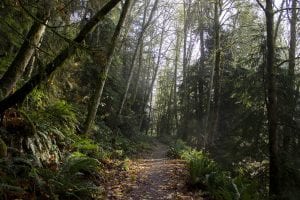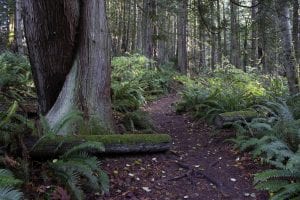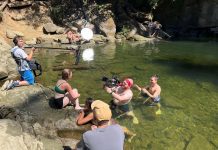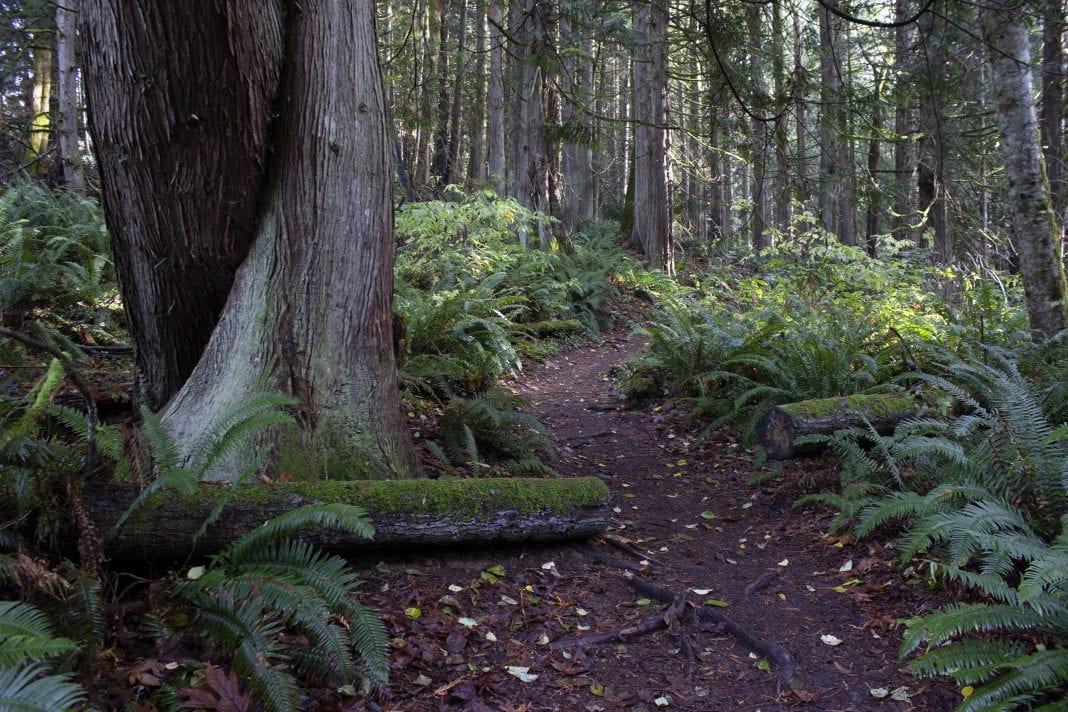Whatcom wildlife is everywhere among our thick forests, rich dirt, and cold waters. We’re fortunate to be surrounded by an abundance of nature, from our massive assortment of birds to whales that occasionally pop into our local harbors.
But some of our area animals are harder to find than others. At least one is so rare (and just plain weird) that many people doubt its existence. From furry to scaly, here are a few quirky animals you might just uncover hiding around Whatcom County.
Northern Flying Squirrel (Glacomys sabrinus)
The northern flying squirrel is a native throughout the forested parts of our state. While squirrels are more than common, the northern flying squirrel is nocturnal, making it rarely seen around Whatcom.
Flying squirrels don’t necessarily “fly,” but glide from tree to tree with a furry parachute called the patagium, a membrane-like flap of skin stretched from wrist to ankle. After a running start, this tiny skydiver spreads its body into a square and takes off. It steers mid-flight with its arms, legs, and a feathered flat tail that helps maintain flight stability and adjust trajectory.

Flying squirrels have strong maternal instincts, producing only one brood a year. They’re also omnivorous and take advantage of bird feeders. If you have a bird feeder, you just might be lucky enough to spot one.
Rubber Boa (Carina bottae)
The rubber boa is one of only two boa native to the United States. Unlike most snakes, the rubber boa doesn’t tolerate higher, dryer temperatures, which makes Whatcom a perfect place for it to live. They’re both nocturnal and crepuscular (active during dawn and dusk), hiding under rocks and damp logs during the day.
The rubber boa is nonvenomous and incredibly docile. They’re often used to teach children or help ophidiophobics overcome their fears. When picked up, they sometimes wrap themselves around the wrist. They’ve never been known to bite humans, but release a potent musk if they feel threatened.
Adults can be anywhere from 1 to 3 feet. Their name comes from the smooth, shiny scales on their loose skin, which gives them a “rubbery” look and feel.
The rubber boa’s tail is similar to its head, which they use to their advantage. If threatened, rubber boas curl into a ball and expose their tail to mimic their head. They use a similar tactic when looking for food. They often feed on young, nesting mammals like mice. If the mother retaliates, the invading boa will defend itself with false “strikes” from its blunt tail, often resulting in scars.
Despite their preference for the cold, rubber boas hibernate in underground dens in the winter.
Mountain Beaver (Aplodontia rufa)
The mountain beaver is a weird one – some doubt it even exists. And that’s no surprise, since it’s a nearly unbelievable creature.
The mountain beaver is not a beaver, and rarely mountainous; it’s actually a rodent. It’s also considered a “living fossil,” having been almost unchanged for the past 40,000 years.

The mountain beaver is native to the Pacific Northwest, living in moist forests and damp urban areas. They’re active year-round, but are seldom seen due to their underground existence. They live alone, digging extensive tunnels up to ten feet underground. Their nests are like little houses, with several “rooms” for nesting, feeding, food storage, and bathroom use.
Don’t mistake shyness for friendliness, though. They chatter and hiss when irritated, and can give a nasty bite, when prompted, with their large incisors. Though they’re sometimes considered a pest (and a rude one at that), they do serve an important role in nature. They move soil around and, over time, leftover food and droppings from old nests become fertilizer.
Northern Alligator Lizard (Elgaria coerulea)
Like the mountain beaver, the alligator lizard is another one of Whatcom’s more cantankerous animals.
The northern alligator lizard is the only lizard native to our region and, unlike the rubber boa, hates anything cold and wet. Their secretive nature makes them hard to find in the wild.
They hibernate all winter. They’re active during the day, when they’re awake, but prefer to hide and blend in – though you might find one sunning on a rock, true to their warmer-blooded nature. They inhabit grass, brush, and rocky openings in forest landscapes, but can sometimes be found on walls, rock piles, woody debris, and building foundations.

Alligator lizards hunt for bugs like crickets, mealworms, and moths, though they’re also known to take on larger prey like small lizards or baby mice. During breeding season, a male alligator lizard will grab onto the head of a female. They often remain that way for hours, oblivious, until the female is ready to mate.
If their bulldog-hold tenacity isn’t obvious, they also have nasty bites by themselves. Watch out!
The next time you’re rambling around the wilds of Whatcom County, keep your eye out for any of these often-elusive creatures.








































